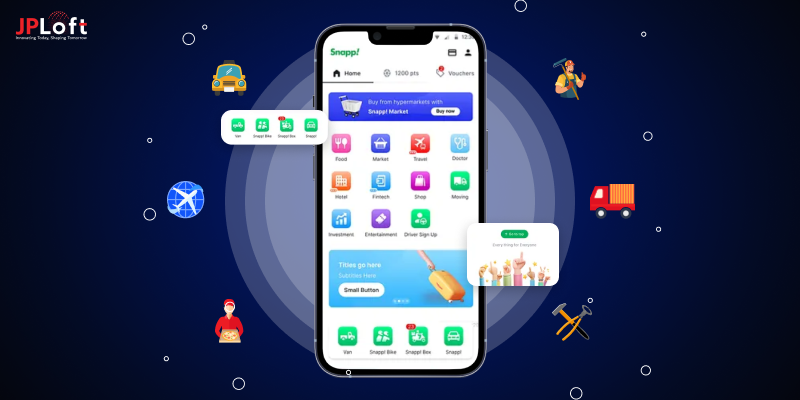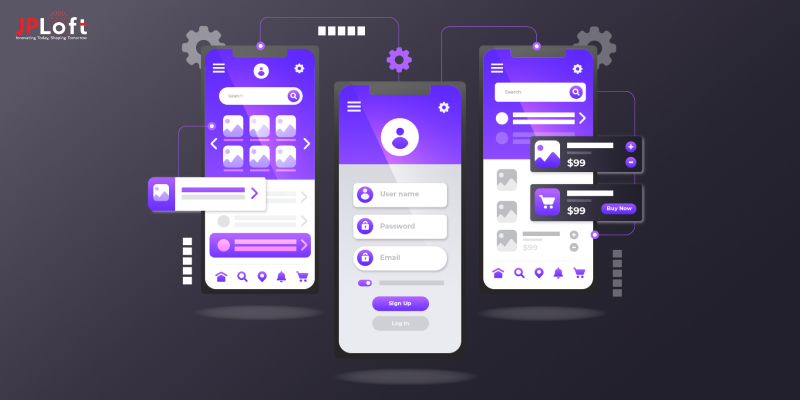Today's digital entertainment industry is experiencing dramatic transformation thanks to Over-The-Top (OTT) platforms revolutionizing our consumption of media content. Be it binge-watching our favorite shows or streaming the newest blockbusters or documentaries - OTT platforms have become part of everyday life and play an essential role. Are You Thinking about Breaking into the Online Television (OTT) Market? In this introduction, we'll delve into all aspects of creating an OTT platform.
To create an OTT platform can transform the entertainment landscape. Not only must one develop a user-friendly video streaming app for such an endeavor, but they must also possess extensive knowledge concerning technology licensing agreements and user engagement strategies. At the core of this process is collaboration with a Video Streaming App Development Company.
They possess technical expertise and industry know-how that will bring your vision into reality, from creating user interface designs to building robust backend infrastructure - their skills are vital in providing viewers with an enjoyable viewing experience.
What is an OTT Platform?
Before we create an OTT platform, let's define what it is. OTT services are digital streaming video that delivers content directly to users over the Internet. This eliminates traditional cable and satellite TV providers from being obstacles to viewing content right now. These platforms provide users access to movies, TV shows, documentaries, and original programming across various devices like smartphones, tablets, smart TVs, and computers.
How to Create an OTT Platform: Building a Video Streaming App Like Netflix
The critical steps to launch an over-the-top (OTT) platform and video streaming app like Netflix using advanced technologies and best practices.
Market Research and Planning
It is essential to conduct extensive market research before you start working on any technical aspects. Get a thorough understanding of the streaming industry and your target audience. Assess your competition, identifying what sets Netflix apart from other platforms. Next, define your unique selling proposition (USP) and create a business plan outlining your vision, revenue model, and content strategy.
Content Licensing
A key differentiator between successful OTT platforms and others lies in their content offerings. To build something similar to Netflix, licensing agreements need to be secured with production houses, studios, and content creators - these negotiations may prove complex; to make things easier, a legal team with experience in media licensing should be sought out to help negotiate them for you.
Technology Stack
To create a compelling and scalable OTT platform, it is imperative to select an infrastructure solution capable of supporting streaming media playback, user management, content delivery, and more. Consider adopting cloud-based technology for optimal scalability and flexibility. Regarding content delivery, content delivery networks like Akamai or Cloudflare should be used to ensure smooth streaming for users.
User Experience Design
The user experience design of an OTT platform is of utmost importance. An engaging design will attract and retain users. Prioritize creating an app that works across devices - smartphones, tablets, smart TVs, web browsers - as seamlessly as possible. Consider hiring experienced UX/UI designers to guarantee both the visual appeal and functionality of your app.
App Development
Your OTT platform's core is its app. When developing one for each forum (iOS, Android, or smart TVs) or opting for hybrid solutions - native apps offer more extraordinary performance while being tailored more closely for specific users but require more development resources. In contrast, hybrid solutions allow cross-platform compatibility but may compromise on performance.
Video Encoding and Transcoding
To stream video efficiently, it is crucial to implement video encoding and transcoding processes. While video encoding optimizes files for streaming, transcoding ensures compatibility across various devices and internet speeds. Utilizing H.264, H.265, or VP9 codecs, along with adaptive bitrate streaming (ABR) technology, are all integral parts of an enjoyable viewership experience.
Content Management System (CMS)
A robust Content Management System is essential to efficiently storing and organizing your library of digital media content. A CMS should support metadata, categorization, and user-friendly tools for uploading, scheduling and managing. Custom-built or off-the-shelf options may be available depending on your specific requirements and budget constraints.
User Authentication and Authorization
Security is paramount in online streaming platforms to safeguard user data and premium content. Utilize robust authentication methods such as OAuth or Single Sign-On (SSO). Furthermore, authorization mechanisms must allow access based on subscription plans, geolocation, or age restrictions for content consumption.
Monetization Strategies
Monetization is an integral component of create an OTT platform. Consider various revenue models - subscription-based, pay-per-view, or hybrid models. Implement payment gateways and create a subscription management system before exploring opportunities for ad-supported content if it fits your business strategy.
Personalization and Recommendation Engine
Successful OTT platforms stand out by using personalization. Recommender engines powered by machine learning algorithms provide personalized content suggestions based on users' viewing histories, preferences, and behavior, which engage viewers while also helping them discover new material. This keeps their audience engaged while assisting them to learn something new!
Analytics and User Insights
To enhance platform and user engagement, leverage analytics tools to collect data on user behavior, content performance, app usage patterns, and insights gained through these analytics. Their senses will provide guidance in decision-making as well as content strategies, allowing you to refine your OTT platform over time.
Quality Control and Testing
To ensure a positive user experience when launching your OTT platform, rigorous quality control testing is essential. Make sure that it functions as intended, has excellent performance, is free from bugs or security vulnerabilities, and tests across different devices, browsers, and internet connection speeds to guarantee optimal functionality and user engagement.
Launch and Marketing
Now that your platform has passed its initial testing stage, it is time to introduce it to the public through marketing and PR efforts. Utilize social media, influencer marketing, and email marketing channels to spread the word about its launch event and draw in its target market.
User Support and Feedback
After launch, provide excellent customer service that quickly addresses user inquiries or issues. Encourage user reviews so that you can gain a deeper insight into user preferences so you can constantly optimize your platform.
Scalability and Growth
Once your platform begins gaining traction, focus on expanding it further - adding content, entering new markets, and innovating with new features as you add them. Consider partnerships and collaborations as ways of developing both its library of content as well as your user base.
Legal Compliance
Your OTT platform must comply with all relevant legal requirements, such as copyright/content licensing agreements, data privacy regulations, and geo-restriction laws. Failing to do so could result in legal complications that threaten its success and compromise its future development.
Stay Current
The OTT industry is ever-evolving, so to ensure competitive advantage and remain profitable, stay abreast of emerging technologies, user preferences, and industry trends to adapt and enhance your platform accordingly. 
Steps to Hire Remote Mobile App Developers for Creating an OTT Platform
If you're creating an over-the-top (OTT) platform and seeking to hire remote mobile app developers, here is a step-by-step guide to assist with this hiring process.
Clarify Your Platform's Requirements
Before engaging any remote developers to develop apps, it is imperative that they clearly understand your platform's requirements.
- Platform and Features (Android and iOS or both): Are your desired app features live streaming, offline download, multilingual support, user profiles, or anything specific to the content?
- Features: What features would be ideal in your app? Are live streaming, offline download, multilingual support, and user profiles part of the content you wish to deliver?
- UI/UX: The design of an app and the user experience is crucial to its success. This is especially true for an Over-the-Top platform, where user engagement plays a significant role.
Look for Relevant Experience
To hire remote mobile app developers successfully, ensure they possess relevant experience building over-the-top (OTT) applications. Working in this sector gives developers an edge as they are familiar with its challenges and best practices - giving you an advantage in selecting developers for this work.
Evaluate Technical Competencies
Technical skill set for mobile app development is of utmost importance for any OTT platform, especially iOS, which utilizes Swift or Objective-C programming languages, and Android, which uses Java or Kotlin development languages. Furthermore, familiarity with media streaming protocols, DRM (Digital Rights Management),and CDN (Content Delivery Network) integrations could prove valuable.
Review Their Portfolio
A developer or Development Company's portfolio provides insight into their quality of work, design aesthetics, and user experience capabilities. You can explore past OTT projects or apps they've completed to indicate work quality.
Communication Skills
Communication is at the core of hiring remote mobile app developers. Developers must not only be adept in code but also at conveying ideas, progress, and challenges effectively to you - this makes for regular update meetings, reviews, and feedback loops essential to the project's success.
Conduct Technical Interviews
A technical interview should provide you with an opportunity to assess a developer's technical knowledge, problem-solving abilities, and coding abilities. Someone from your tech team or an outside expert should conduct it for optimal results.
Consider Time Zone Differences
One of the most significant challenges in hiring remote workers is time zone differences, making communication with them much smoother. Therefore, it is crucial to hire developers whose working hours overlap at least some every day for smooth communication purposes.
Launch a Trial Project
Before embarking on any long-term project, set up a small trial project. This will give you an opportunity to evaluate the developer's skills, work ethic, and deliverables before making a final decision about whether or not to move forward with them.
Discuss the Contract and Payment Terms
Discuss contract terms and payments once you feel confident about their abilities. It is essential to have a contract that clearly outlines the deliverables and payment terms, as well as intellectual property rights. Being honest may prevent future disputes.
Utilize Collaboration Tools
Employing project management and collaboration tools like Jira, Trello, Slack, or Microsoft Teams can assist in keeping projects on schedule by providing real-time communication, task tracking, and documentation capabilities, ensuring all parties involved remain aligned on their tasks and deliverables.
Reassert Progress and Provide Feedback
To create an OTT platform that distinguishes itself, regular reviews and feedback sessions must occur on its progress and implementation. Frequent checkpoints ensure the app reflects your vision while meeting quality standards.
How Much Does it Cost to Make an OTT Platform?
To create an OTT platform can vary considerably based on a range of factors. At its core, however, creating an OTT platform requires an infrastructure for video hosting and streaming, as well as payment gateway security and content management tools such as user management or analytics management. It features user reviews or ratings and recommendations for its success. Starter prices for basic online television (OTT) applications could start as low as $10k to $50k, which typically include standard features and an intuitive user interface without many of the bells and whistles found in more sophisticated platforms.
However, if your goal is something more complex akin to Netflix or Hulu, costs can range anywhere from $100,000-$500,000 or even higher. This cost range considers high-end features, multiple device compatibility, advanced analytics capabilities, and providing an exceptional user experience. Costs to make an app depend on several variables, including your chosen regions (considering localization requirements),the number and quality of third-party integrations, security measures, and server infrastructure quality. Marketing and content acquisition expenses also play a significant role.
Cost Factors to Create an OTT Platform
Key cost factors associated with Android app development and iOS app development.
Content Acquisition
Content acquisition is one of the primary cost drivers when create an OTT platform and plays an integral part in attracting and retaining users. Licensing content, producing original material, or both could significantly affect your budget. License agreements with studios and content providers may be more cost-effective when building up your content library, while creating original material can be more time-consuming but will make your platform stand out from competitors.
Development of an OTT Platform
Building the core OTT platform can be an expensive and time-consuming task, including front-end and backend development, as well as server costs. Furthermore, users must find it user-friendly, with compatibility for various devices and screen sizes. Decisions between custom development and pre-built solutions can have significant financial consequences. While custom development offers greater customization and flexibility, it tends to be more expensive. Pre-built solutions may be quicker and simpler to deploy but could contain limitations that compromise their usefulness.
Android App Development
Due to Android's extensive user base, investing in its development is paramount. This involves designing native apps for this platform that offer seamless navigation and an enjoyable user experience. Development costs for Android apps can depend on complexity, design, and the features desired. Hiring experienced developers, designers, and testers to ensure your app meets industry standards is vital to its success.
IOS App Development
To capture the Apple user market, iOS app development is critical, however, due to higher development costs associated with the Apple ecosystem and OSes. Developing native iOS applications can be expensive. Cost considerations depend on app complexity, design, and the need for advanced features. Ensuring that an iOS app adheres to Apple's guidelines and standards is vital for its submission and approval on the App Store.
Server and Hosting Costs
A high-performing server infrastructure is an integral component of running an OTT platform or mobile app effectively, and its cost can quickly add up if your anticipated user base increases significantly. Factor in ongoing maintenance, security concerns, and scaling requirements as your platform expands.
Video Streaming Costs
Delivering high-quality video content is at the heart of OTT platforms. Video streaming costs can vary depending on factors like user counts, content quality, and the geography of your target audience. Consider expenses related to content transcoding, adaptive streaming, and bandwidth usage as you prepare an OTT platform. They are optimizing video delivery while managing costs effectively remains a top challenge for OTTs.
Security and DRM
Ensuring user data security and protecting content against piracy are non-negotiable requirements of successful content development and operation. Digital Rights Management (DRM) solutions or other security measures implemented could add significantly to development costs as well as operational expenses; quality security is essential not only for content protection but also for maintaining user trust.
Maintenance and Updates
Once your OTT platform and apps are operational, ongoing maintenance and updates may be required to keep them relevant to modern operating systems and devices. This may involve bug fixes, feature enhancements, and software updates designed to keep them compatible. Allocating an adequate budget for continuous improvement is essential to remaining competitive.
Marketing and Promotion
Create an OTT platform is only the first step; engaging users requires consistent investment in marketing activities such as advertisements, social media campaigns, partnerships, and partnerships to increase user base growth. Marketing initiatives may incur costs; creating an engaged community takes both hard work and dedication in building its user base.
Customer Support and Content Curation
Successful customer support and content curation management are crucial to ensure user satisfaction, so ensure that costs related to staffing, content curation, and metadata management are included in your budget. 
Conclusion
Establishing an Over-The-Top (OTT) platform requires careful planning, innovative thinking, and an in-depth knowledge of the evolving digital landscape. Consumer demand for on-demand content via mobile devices increases the importance of developing an effective OTT platform; to stay competitive in this arena, it is necessary to use mobile app development services for success. OTT platforms have revolutionized how content is delivered and consumed. With the global shift toward digital streaming, it is clear that OTT is here to stay; for businesses hoping to capitalize on this trend, investing in an intuitive, user-friendly platform catering to a diverse target audience is imperative. Collaboration with mobile app development services is paramount to guarantee seamless access across smartphones and tablets - reaching more of your target demographic.
Furthermore, they enable continuous adaptation and improvement concerning an ever-evolving technological landscape and consumer tastes. Innovation and adaptability are keys to remaining competitive in this rapidly evolving industry. An over-the-top (OTT) platform combined with mobile app development expertise opens up many possibilities, not only providing content delivery but also strengthening brand engagement, customer loyalty, and revenue generation.
FAQs
- Why create an Over-The-Top (OTT) platform?
An OTT (Over-The-Top) platform, or Over-The-Top service, provides video content directly over the Internet instead of through traditional cable or satellite television providers. Launching such a service offers businesses a lucrative business opportunity as it reaches global audiences while monetizing content production and providing on-demand access to abundant video material.
2. How can I start building my own OTT platform?
To create an OTT platform, identify your niche and target audience. Next, acquire content licenses or produce original material as necessary, select an appropriate technology stack/white-label solution, create a user-friendly interface, and ensure secure streaming, then launch/market the platform to secure subscribership.
3. What components are necessary for an Over-The-Top (OTT) platform?
An OTT platform typically consists of several technical elements, including content delivery infrastructure (CDN),video encoding and transcoding systems, content management system (CMS),user authentication/authorization processes, payment gateways, and mobile app or website interfaces - not to mention analytics/recommendation systems for additional analysis/suggestions.
4. Are you wondering how I can monetize my OTT Platform?
There are numerous strategies for monetizing an over-the-top (OTT) platform. Options could include subscription-based plans, pay-per-view offerings, or including advertisements within content. Furthermore, partnerships may exist between advertisers and providers or freemium models where some content can be offered free while premium material requires payment upfront.
5. What are the challenges associated with running an over-the-top platform, and how can I overcome them?
Operating an OTT platform presents unique challenges, such as content licensing costs, competition, and user acquisition. To meet them head-on, take care when planning your content strategy and conducting market research to optimize user engagement and focus on user retention. Regularly updating your library keeps subscribers invested and engaged with your platform.













Share this blog